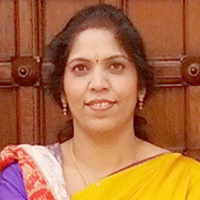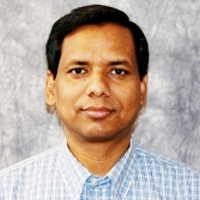Diffuse large B-cell Lymphoma mimicking as cholangiocarcinoma in a young male presenting with obstructive jaundice
Published on: 12th October, 2021
OCLC Number/Unique Identifier: 9305369697
The involvement of bile duct in lymphoma is considered to be very rare and is usually a sequela of a disseminated disease [1]. In contrast to secondary involvement, primary non-Hodgkin’s lymphoma arising from the bile duct is extremely rare and presents with obstructive jaundice [2,3]. Non-Hodgkin’s lymphoma (NHL) accounts for 1% - 2% of all cases of malignant biliary obstruction [4]. Hepatobiliary involvement by malignant lymphoma is usually a secondary manifestation of systemic lymphoma. The first case of Non-Hodgkin lymphoma arising from bile duct was described by Nguyen in 1982 [5]. Most common extra nodal involvement of NHL is abdomen. Although, involvement of the stomach, pancreas or common bile duct is not common [6]. We present to you a case of 31year old male who presented to us with obstructive jaundice and was later diagnosed as Diffuse Large B-Cell lymphoma.
Does global longitudinal strain improve stratification risk in heart failure with preserved ejection fraction?
Published on: 8th September, 2022
Background: Heart Failure with Preserved Ejection Fraction (HFPEF) accounts for more than half of the cases of heart failure.Long regarded as an abnormality of left ventricular diastolic function, recent studies using longitudinal strain (two-dimensional speckle tracking mode) have suggested that left ventricular longitudinal systolic function is altered in HFPEF.Despite these interesting pathophysiological perspectives, the data in the literature on the prognostic value of the alteration of longitudinal strain are controversial. Given these conflicting results, it is difficult to confirm the magnitude and prevalence of impaired LV longitudinal systolic function in patients with HFPEF and its prognostic relevance. Purposes: This work aims to study the prognostic value of Global the left ventricle’s Global Longitudinal Strain (GLS) Algerian cohort of patients with HFPEF. Patients and methods: We conducted a monocentric prospective observational study from April 2018 to April 2020, with a minimum follow-up of 1 year for each recruited patient. We included patients over the age of 18 referred to the echocardiography laboratory for chronic or acute HFpEF, defined according to the criteria of ESC 2016. 153 consecutive patients underwent clinical examination, biological tests, and echocardiography with measurement of GLS at rest, in addition to routine management by the attending physicians.Results: 153 patients were collected. The average age of our patients is 73 +/- 11 years ranging from 42 to 91 years old. The female population is predominant with a rate of 67%. Comorbidities are predominant mainly by arterial hypertension (86%) and diabetes (64%), with a history of atrial fibrillation (46%).63% of patients have impaired GLS (< 16%). Contrary to our hypothesis, GLS was not shown to be a powerful predictor of cardiovascular events in HFPEF patients either in dichotomous analysis (OR = 0.79; p = 0.64) or in continuous analysis (OR = 0.97; p = 0.69).We were able to identify that congestive venous signs, anemia, and pulmonary hypertension, are the main independent prognostic factors in our Algerian population study. Conclusion: We were unable to demonstrate the prognostic role of mpaired GLS in our population of patients with HFPEF.
Diagnostic evaluation of nasopharyngeal swab and saliva kits against SARS-CoV-2: Adequate rapid screening is deemed necessary to overcome COVID-19 Pandemic
Published on: 16th September, 2022
OCLC Number/Unique Identifier: 9625089265
SARS-CoV-2 is the virus associated with the disease called COVID-19 and become a global pandemic. The only way to prevent its severe scenarios is through timely and rapid testing. In comparison to more time taking gold-standard RT-PCR testing, rapid diagnostic kits are used. For better prevention and diagnosis of SARS-CoV-2, the analysis of rapid diagnostic kits' accuracy and specificity is necessary. This study is meant to assess and examine the viability, responsiveness, and explicitness of quick antigen distinguishing nasopharyngeal swabs (NPS), and saliva-based units. The study was conducted on 200 suspected COVID-19 patients from Islamabad, 100 of which were RT-PCR positive while 100 were RT-PCR negative. For the analysis of Rapid diagnostic COVID-19 kits (RDT), nasopharyngeal swabs (NPS) and saliva samples were taken from the RT-PCR positive and negative patients. Among 100 RT-PCR positive patients, 62% were males (19 - 91 years), 34% were females (20 - 78 years) and 4% were children (6 - 17 years). False-negative results were significantly more observed in saliva-based RDTs of the sample (49%) as compared to nasopharyngeal swab RDT (38%). There were 2% invalid results in saliva-based RDT and 3% invalid results in Nasopharyngeal swab RDT. While among 100 RT-PCR negative patients 69% were males (19 - 80 yrs), 27% were females (18 - 77 yrs) and 4% were children (12 - 16 yrs.). False positive results were significantly more in saliva-based RDT (22%) as compared to Nasopharyngeal swab RDT (13%). The sensitivity and specificity of saliva-based RDT were 67% and 87% respectively while that of Nasopharyngeal swab (NPS) was 72% and 82% respectively, both of which were less than the gold standard RT-PCR sensitivity demanding the introduction of more sensitive RDT kits in Pakistan for accurate detection of COVID-19.
Factors associated with Female Genital Mutilation among daughters of reproductive aged women at Academic Charity Teaching Hospital (ACTH)
Published on: 11th June, 2021
OCLC Number/Unique Identifier: 9081421008
Introduction: It is estimated that more than 200 million girls and women alive today have undergone female genital mutilation. Female genital mutilation still remains to be a serious problem for large proportion of women in most sub-Saharan Africa countries including Sudan, with a high prevalence of 88%.
Objective: The main objective was to identify the factors associated with FGM among daughters of reproductive aged woman.
Materials and methods: A community based cross-sectional study was conducted on 200 mothers, the total sample was collected in ACTH based on the number of reproductive age mothers with at least one daughter older than 5 years. A structured and interviewer administered questionnaire was used to collect data. The data obtained was analyzed by the use of the SPSS software.
Results: Out of 200 mothers, 113 (56.5%) had at least one circumcised daughter. Knowledge about genital mutilation (AOR = 4.29, 95% CI: 1.13-15.37), attitude (AOR = 48.53, 95% CI: 14.45-198.69) and mothers circumcision status (AOR = 14.03, 95% CI: 2.81- 95.45) were the most significantly associated with FGM. Furthermore, having good knowledge, positive attitude, high socio-economic status, being literate, being of Christian religion and living in urban area had lower odds of having a circumcised daughter.
Conclusion: In this study, more than half of the mothers had at least one circumcised daughter. Mothers’ knowledge, attitude, circumcision status, socio-economic status, age, residence, educational level and religion were significantly associated with female genital mutilation.
Atrial fibrillation in elite athletes. What is missing?
Published on: 27th October, 2022
Although the beneficial effect of physical activity in the general population is well established, in elite athletes under vigorous physical activity, the effect on the electrical system of the heart is controversial. Indeed, several studies have shown an increased rate of atrial fibrillation among athletes, whereas others suggest that improved exercise capacity with training reduces atrial fibrillation recurrence. The pathophysiologic explanation of that discrepancy is missing, although several underlying mechanisms have been proposed. Taking into account the current knowledge, it seems that, although the beneficial effects of exercise are well recognized, there are conflicting data regarding the relation of the occurrence - the rate of atrial fibrillation to high-volume exercise and too long-term training. Its significance on the quality of life especially in highly trained athletes remains to be elucidated. Therefore, this short review will try to discuss this discrepancy and hopefully underlie the arising arguments.
Correlation of plasma protein from MDS, young and elderly patients by SDS-page
Published on: 11th November, 2019
OCLC Number/Unique Identifier: 8330254423
Summary: Myelodysplastic Syndrome (MDS) is a heterogeneous group of clonal hematopoietic malignancies characterized by progressive cytopenias, ineffective hematopoiesis, bone marrow hypercellularity and transformation to acute myeloid leukemia (AML).
Objectives: Identify plasma proteins from MDS patients and from two healthy controls groups (young and elderly) by SDS-Page.
Methods: Plasma from 08 healthy young, 08 healthy elderly and 08 MDS patients were used for this study. Proteins were fractionated, precipitated, used for SDS-PAGE gel analysis, stained with comassie brilliant blue, scanned and bands were analyzed.
Results: It was possible to identify in both, 20% fraction and supernatant, proteins that were differentially expressed in each group. The ones that have showed some clinical relevance. Fibronectin was highly expressed only in the young control group. α2-Macroglobulin was also expressed in both control groups, but it was not expressed in the MDS group. Haptoglobin was highly expressed only in the elderly control and SMD groups.
Conclusion: Protein expression in plasma can be a biomarker for MDS, and may play a key role in the process of aging and hematologic malignancies development.
The motivational factors and adverse events experienced by healthy volunteers donating bone marrow for research
Published on: 5th December, 2019
OCLC Number/Unique Identifier: 8479094098
Background: With the advancement of cell therapy research, there is an increasing need for healthy volunteers (HV) to donate small volumes (30 ml) of human bone marrow (BM). The BM procedure required to procure small volumes is invasive, although short-lived (25 seconds), is not without risk. To ensure a sustainable supply of BM for research and cell therapy, greater information of the risks and factors that motivate HV to donate small volumes of BM will help optimize the procedure and HV enrolment, ensuring donors are fully informed of the potential risks.
Objective: To identify the adverse events (AE) experienced by HV during and after small volume BM procedure and understand the motivating factors that influence HV to donate BM for research.
Method: HV (n = 55) who donated BM (30 ml) for scientific research and provided informed consent were administered a questionnaire to identify the type, duration and severity of AE experienced during and post-BM aspiration; and to determine the motivating factors that influenced their willingness to donate BM.
Results: Pain was experienced by 89% of participants during the BM procedure with moderate grade reported by 40%. One/more of the following AE were experienced by 73% of the volunteers post-BM procedure: pain, fatigue, site reaction, nausea and transient hypotension. AE resolved within an average of three days. The reported motivational factors ranked in the following order: first, to advance research for the benefit of future patients; compensation for participation; free medical check-up; lastly, the research question was interesting.
Conclusion: Young HV, motivated primarily by altruism and financial compensation, risk the occurrence of transient AE following donation of small-volume BM for research.
Personal and academic factors of stress in nursing students during clinical practices in the context of COVID-19
Published on: 23rd March, 2022
In the year 2020, COVID-19 spread globally. The increase in cases and deaths has created problems such as stress, anxiety, and depression in health workers.The health care workers (inclusive of students in professional practices are vulnerable to psychiatric pathology due to their exposure to the virus, their increased risk of contagion and even death, overload of functions, pressure for decision-making, the close experience of patients, relatives, and colleagues’ pain, and the requirement to function at the top of capacity.The objective of this research is to analyse the personal and academic factors of stress development in nursing students, during clinical practices in the COVID-19 context.It is a cases and controls study, with 154 students who attended clinical practices during the period of May-August 2020. High levels of stress were found in 61% of students, 34 of these had difficulties concentrating (OR: 3.08), 64 participants reported fear of contact with COVID-19 patients, (OR: 1.9) and 68 participants were identified with inadequate knowledge of COVID-19 transmission (OR: 1.5).The study found that the transition to virtual classes as a strategy to reduce contagion increases three times the possibilities of developing stress, another variable that doubles the risk of stress is the fear of caring for a patient with COVID-19 who has not been diagnosed.
Timely initiation of breastfeeding and associated factors among mothers with vaginal and cesarean deliveries in public hospitals of Addis Ababa, Ethiopia
Published on: 21st April, 2022
OCLC Number/Unique Identifier: 9485822018
Background: WHO and UNICEF recommend breastfeeding to be initiated within an hour of birth. However, timely initiation of breastfeeding remains low in Ethiopia. Therefore, this study aimed to compare the timely initiation of breastfeeding and associated factors with cesarean and vaginal deliveries in public hospitals in Addis Ababa, 2021. Methods and materials: Comparative cross-sectional study was conducted from January 2021 to February 2021 in public hospitals of Addis Ababa. 322 mothers within three days of delivery at the postnatal ward of the respective public hospitals were selected. A multi-stage sampling method was employed with the final participants being recruited by systematic random sampling. Data was entered to Epi data Version 4.6 and analysis was performed by SPSS Version 26. A Binary and multivariate logistic regression statistical model was used. Adjusted odds ratio with 95% CI was computed to see the strength of association. Result: Timely breastfeeding initiation was 79 (51.2%) and 123 (80%) for cesarean and vaginal deliveries. With a vaginal delivery, pre-lacteal feeding (AOR = 5.50, 95% CI: 1.83 - 16.57) was significantly associated with timely initiation of breastfeeding. Multiparity (AOR = 2.14, 95% CI: 1.02 - 4.50), support from health care workers (AOR = 2.602, 95% CI: 1.16 - 5.82), and pre-lacteal feeding (AOR = 2.55, 95% CI: 1.13 - 5.75) were significantly associated with timely initiation of breastfeeding with cesarean delivery. Conclusion: The rate of timely initiation of breastfeeding differs according to the mode of delivery. Cesarean delivery, as compared to vaginal delivery, was associated with a lower rate of timely initiation of breastfeeding.
A case of hemiplegia with a cerebrovascular accident in which motor imagery of finger extension on the affected side with finger extension on the unaffected side was effective - A study using F-waves
Published on: 1st July, 2022
We investigated the effect of exercise therapy by simultaneously using motor imagery of thumb or all finger extension on the affected side and thumb or all finger extension exercise on the unaffected side by using the F-wave, which is used to measure the excitability of anterior horn cells to devise an appropriate exercise therapy using motor imagery for patients with increased muscle tone of the thumb muscles on the affected side. Tasks 1, 2, 3, and 4 involved motor imagery of thumb extension on the affected side, motor imagery of finger extension on the affected side, motor imagery of thumb extension on the affected side based on thumb extension on the unaffected side, and finger extension on the affected side based on finger extension on the unaffected side, respectively; conducted in three trials, with one week or more between each trial. Each task was performed for one minute, with a five-minute interval between tasks. The F-waves from the thenar muscles were recorded with median nerve stimulation on the affected side before and during the tasks. The relative values of the F-wave data of the task and the F-wave data before (resting state) and during the tasks were calculated. In results, the relative data of the F/M amplitude ratio in task 4 was lower than that in the other tasks in three trials. In conclusion, motor imagery of finger extension on the affected side with finger extension movement on the unaffected side was effective for improving the muscle tone of the thenar muscles on the affected side.
















